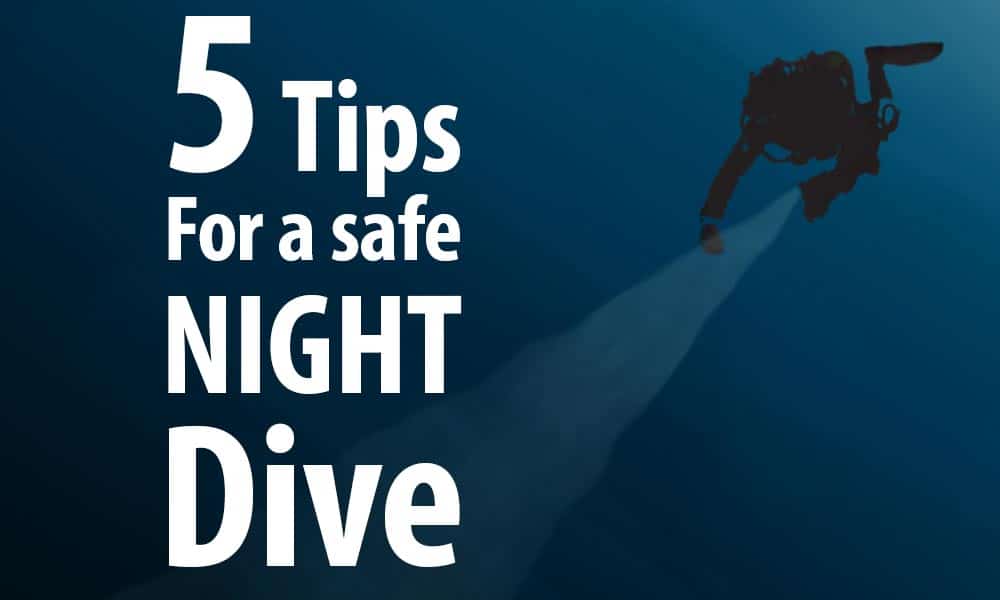5 Tips for a Safe and Fun Night Dive
by Cris Merz
The sun begins to set and some of the crowd along the beaches are facing the horizon to try and catch a glimpse of the elusive green flash. The mixed drinks with umbrellas become a more frequent accessory in the hands of the tourist in flowered shirts as the steel drums set a rhythm to a long forgotten hit from the 1970’s. While this happens, you’ve passed on the afternoon cocktail as you are setting your gear up for a night dive. Diving at night is diving in another world and it should not be taken lightly… even if you have dove the same site, time after time during the day, doing so at night will bring you to a new world, with new shadows and new life. Though extra steps and precautions are to be considered, by following the tips below, you may be able to make your night dive experience a lot safer and a lot more fun.
1. Gear
Get a primary and a back up light. Never dive with just one light. The magnitude and brightness is your call and they may vary based on the dive objective. Your back up light doesn’t have to be of the same quality or intensity as your primary light but it should be able to get you back to the surface safely. Once the primary light is out of commission, you should abort your dive. Remember, bigger and brighter are not always the best. As a matter of fact, they usually aren’t as light and bright as the sun and will usually send the creatures you are trying to find and admire out to seek shelter from the bright rays.
2. Aim
Do not aim your light at another diver’s face – ever. During the dive, their eyes have adjusted to the brightness of the dive and a direct flash into their eyes could blind them temporarily. Be respectful of your light and always try to keep it away from another diver’s general direction. When looking for someone or trying to ID a diver, aim at their fins. If diving off a skiff or inflatable, keep the light off until you’re ready to dive so the driver can keep his adjusted night vision in check. When ready, aim your light toward your chest until in the water.
3. Signals
You will have to use other forms of communication with your dive buddy than the ones you use during the day. As you very well know, poor communication between buddies can really turn a good dive sour. Your flashlight will now be your primary source of communication though you may use your light to shine at your hand to show your buddy your signal. Knowing the signals are key to successful communication. The Night Diver Course covers all the various forms of underwater night diving communication.
4. Reconnaissance
Dive the site during the day. Though the shapes and figures will change with the light from your flashlight compared to the sun’s, the topography remains the same. Recognizing a corner may alleviate some people’s anxiety if they are not used to diving at night and are still a little nervous about it. It helps knowing the ledges as it may remind you of depths and location.
5. Plan your return
If you’re diving from shore, have marker lights on the beach that you can identify if needed. Two lights close together at your entry/exit point with a third farther away gives you something to swim for after the dive when you’re swimming back in. If boat diving, the vessel should be marked with a flashing strobe so you can to find your way back. When surfacing near the boat, shine your light toward the surface.
Look into doing a Night Diving Specialty for more information. Enjoy your night dive, and remember that you don’t like being woken up when you are having your 3rd REM cycle at 4am… do not disturb the creatures that are sleeping. Dusk may bring you the most activity as the changing of the guard is occurring, as well as feeding, mating, skirmishing and spawning. Always obey local law and, if possible, dive with a guide.

